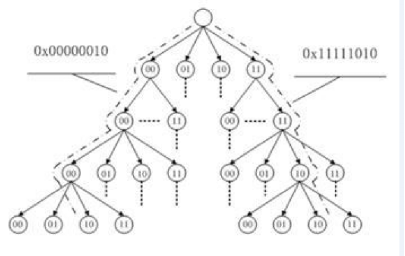編輯:關於android開發
Application中有兩個與內存管理相關的方法:onLowMemory()和 onTrimMemory(int level),源碼如下
@CallSuper
public void onLowMemory() {
Object[] callbacks = collectComponentCallbacks();
if (callbacks != null) {
for (int i=0; i<callbacks.length; i++) {
((ComponentCallbacks)callbacks[i]).onLowMemory();
}
}
}
@CallSuper
public void onTrimMemory(int level) {
Object[] callbacks = collectComponentCallbacks();
if (callbacks != null) {
for (int i=0; i<callbacks.length; i++) {
Object c = callbacks[i];
if (c instanceof ComponentCallbacks2) {
((ComponentCallbacks2)c).onTrimMemory(level);
}
}
}
}
從源碼我們可以看到Application收到這兩個回調時會通知它的監聽者,而Activity和Service都注冊了監聽,
因此我們可以Application中重寫這兩個方法,也可以在組件中重寫這兩個方法。
先重點介紹一下onTrimMemory
為了更好的管理內存,OnTrimMemory 方法在 API-14 被引入。這個回調可以在所有組件中獲取到(Activity, Service, ContentProvider, and Application)。
你應該根據當前設備的限制復寫 onTrimMemory(int) 來逐步的釋放內存。通過復寫這個方法釋放資源可以幫助你的app更好的響應系統整體,同時通過讓你的app
在系統中存活更久來提高用戶體驗。如果在系統內存很低時,你仍舊不釋放內存,系統將會優先殺死你在的進程。這樣當用戶返回app時需要重啟影響用戶體驗。
onTrimMemory(int)的level值並不成線性關系,它只是提供了內存不同狀態的線索。
1. 回調時機
/**
* Called when the operating system has determined that it is a good
* time for a process to trim unneeded memory from its process. This will
* happen for example when it goes in the background and there is not enough
* memory to keep as many background processes running as desired. You
* should never compare to exact values of the level, since new intermediate
* values may be added -- you will typically want to compare if the value
* is greater or equal to a level you are interested in.
*
* <p>To retrieve the processes current trim level at any point, you can
* use {@link android.app.ActivityManager#getMyMemoryState
* ActivityManager.getMyMemoryState(RunningAppProcessInfo)}.
*
* @param level The context of the trim, giving a hint of the amount of
* trimming the application may like to perform. May be
* {@link #TRIM_MEMORY_COMPLETE}, {@link #TRIM_MEMORY_MODERATE},
* {@link #TRIM_MEMORY_BACKGROUND}, {@link #TRIM_MEMORY_UI_HIDDEN},
* {@link #TRIM_MEMORY_RUNNING_CRITICAL}, {@link #TRIM_MEMORY_RUNNING_LOW},
* or {@link #TRIM_MEMORY_RUNNING_MODERATE}.
*/
void onTrimMemory(int level);
當操作系統認為這是一個進程釋放無用內存的好時機時,會調用此方法。比如說當已經沒有足夠的內存來維持目前所有的後台進程,而此進程正好處於後台。
非常不推薦用一個精確的值來與level作比較,因為可能會增加新的差值,推薦的做法是判斷一個值是否大於或者等於你感興趣的level.
為了獲取所有進程目前的level,你可以調用{@link android.app.ActivityManager#getMyMemoryState* ActivityManager.getMyMemoryState(RunningAppProcessInfo)}
2.level值的具體含義
/**
* Level for {@link #onTrimMemory(int)}: the process is nearing the end
* of the background LRU list, and if more memory isn't found soon it will
* be killed.
*/
static final int TRIM_MEMORY_COMPLETE = 80;
/**
* Level for {@link #onTrimMemory(int)}: the process is around the middle
* of the background LRU list; freeing memory can help the system keep
* other processes running later in the list for better overall performance.
*/
static final int TRIM_MEMORY_MODERATE = 60;
/**
* Level for {@link #onTrimMemory(int)}: the process has gone on to the
* LRU list. This is a good opportunity to clean up resources that can
* efficiently and quickly be re-built if the user returns to the app.
*/
static final int TRIM_MEMORY_BACKGROUND = 40;
/**
* Level for {@link #onTrimMemory(int)}: the process had been showing
* a user interface, and is no longer doing so. Large allocations with
* the UI should be released at this point to allow memory to be better
* managed.
*/
static final int TRIM_MEMORY_UI_HIDDEN = 20;
/**
* Level for {@link #onTrimMemory(int)}: the process is not an expendable
* background process, but the device is running extremely low on memory
* and is about to not be able to keep any background processes running.
* Your running process should free up as many non-critical resources as it
* can to allow that memory to be used elsewhere. The next thing that
* will happen after this is {@link #onLowMemory()} called to report that
* nothing at all can be kept in the background, a situation that can start
* to notably impact the user.
*/
static final int TRIM_MEMORY_RUNNING_CRITICAL = 15;
/**
* Level for {@link #onTrimMemory(int)}: the process is not an expendable
* background process, but the device is running low on memory.
* Your running process should free up unneeded resources to allow that
* memory to be used elsewhere.
*/
static final int TRIM_MEMORY_RUNNING_LOW = 10;
/**
* Level for {@link #onTrimMemory(int)}: the process is not an expendable
* background process, but the device is running moderately low on memory.
* Your running process may want to release some unneeded resources for
* use elsewhere.
*/
static final int TRIM_MEMORY_RUNNING_MODERATE = 5;
當你的app在後台時:
TRIM_MEMORY_COMPLETE :當前進程在LRU列表的尾部,如果沒有足夠的內存,它將很快被殺死。這時候你應該釋放任何不影響app運行的資源。
TRIM_MEMORY_MODERATE :當前進程在LRU列表的中部,如果系統進一步需要內存,你的進程可能會被殺死。
TRIM_MEMORY_BACKGROUND:當前進程在LRU列表的頭部,雖然你的進程不會被高優殺死,但是系統已經開始准備殺死LRU列表中的其他進程了,
因此你應該盡量的釋放能夠快速回復的資源,以保證當用戶返回你的app時可以快速恢復。 。
當你的app的可見性改變時:
TRIM_MEMORY_UI_HIDDEN:當前進程的界面已經不可見,這時是釋放UI相關的資源的好時機。
當你的app正在運行時:
TRIM_MEMORY_RUNNING_CRITICAL:雖然你的進程不會被殺死,但是系統已經開始准備殺死其他的後台進程了,這時候你應該釋放無用資源以防止性能下降。
下一個階段就是調用"onLowMemory()"來報告開始殺死後台進程了,特別是狀況已經開始影響到用戶。
TRIM_MEMORY_RUNNING_LOW:雖然你的進程不會被殺死,但是系統已經開始准備殺死其他的後台進程了,你應該釋放不必要的資源來提供系統性能,否則會
影響用戶體驗。
TRIM_MEMORY_RUNNING_MODERATE:系統已經進入了低內存的狀態,你的進程正在運行但是不會被殺死。
再來說一下onLowMemory
在引入OnTrimMemory之前都是使用OnLowMemory方法。如果你的app運行在API-14+的機器上,應該使用 OnTrimMemory(int),OnLowMemory的調用時機大概等同於TRIM_MEMORY_COMPLETE.
 Linux內核基數樹應用分析
Linux內核基數樹應用分析
Linux內核基數樹應用分析Linux內核基數樹應用分析——lvyilong316基數樹(Radix tree)可看做是以二進制位串為關鍵字的trie樹,是一種多叉樹結構
 Android開發之自定義的ListView(UITableViewController),自定義uitableview
Android開發之自定義的ListView(UITableViewController),自定義uitableview
Android開發之自定義的ListView(UITableViewController),自定義uitableviewAndroid開發中的ListView, 顧名方法
 Android開發1:基本UI界面設計——布局和組件,androidui
Android開發1:基本UI界面設計——布局和組件,androidui
Android開發1:基本UI界面設計——布局和組件,androidui前言 啦啦啦~本學期要開始學習Android開發啦~ 博主在開始學習前是完完全全的小白,只有在平時
 我的android學習經歷8,android學習經歷8
我的android學習經歷8,android學習經歷8
我的android學習經歷8,android學習經歷8android簽名打包apk文件 1.在要打包的項目上右擊打開Android Tools,然後打開Export An